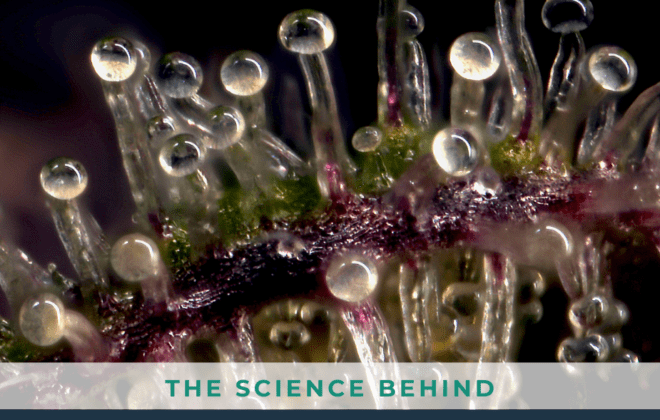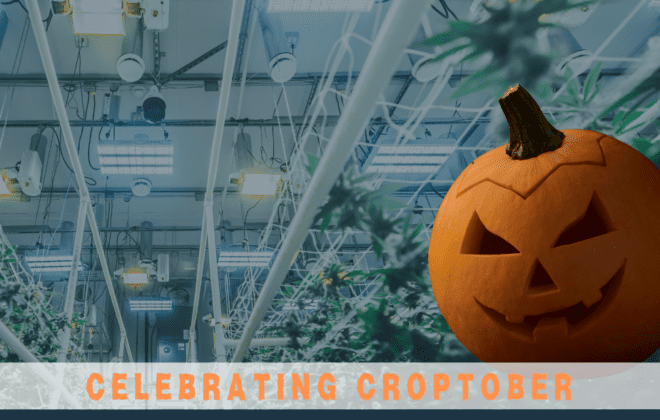TAKING CONTROL OF YOUR GROW-MANAGING PLANT STRETCH

Cannabis cultivators all have one thing in common, they want to get the most out of their crop in both quantity and quality.
But how do you do both successfully?
Incorporating training techniques, such as Fimming and Topping, is one strategy to maximize yield. However, one thing that is commonly overlooked is the nature of your cultivar and its likelihood of stretching. While desired in some cases, unwanted stretching can cause light burn, weak stocks, or even worse, a crop with nowhere to flower.
WHAT IS PLANT STRETCHING?
Put simply; plant stretching is a rapid upward growth spurt resulting in long and lean plants. All cannabis plants will go through a transitional period, where rapid growth will occur in a relatively short period of time. This growth spurt is often called the flowering stretch and typically occurs when cannabis shifts from the vegetative to flowering states.
Genetics play an important role in the amount that the plant will stretch. Some strains, specifically sativas, are bred to grow taller, while others, usually indicas, are more compact.
As cultivators, anticipating and knowing how to manipulate the natural genetic stretch will help you get a better quality and hopefully, yield.
Takeaway: Know the natural growth pattern of your genetics, as well as the parameters of your environment, so that you can begin to manipulate and use the stretch to your advantage.
As a grower, you have the power to use tools and techniques to enhance or discourage a plant’s natural stretch. Lighting and ceiling height play a vital role in plant stretching. This is why it is critical for growers to understand the overall role that lights play in plant growth and then control the environment accordingly.
Before we launch into lights, let’s provide a few facts about why plants stretch in the first place.
REASONS WHY PLANTS STRETCH
1. The strain is bred to grow lean and tall. Growers should only choose these strains when they have an environment that can meet it’s natural growth needs.
2. The flowering stretch. This usually occurs in the first two weeks of bloom and is when the plant shoots upwards. In some strains, it may almost double its height before it focuses on producing the bud. Since larger plants will often produce more buds, most growers want to encourage this stretch period.
3. Light conditions, either the lights lack the necessary intensity for growth or are too far away from the plant.
4. Inadequate light conditions can result in dramatic stem growth as the plant strains to reach the light that it needs for healthy growth. Plants are highly adaptive, so if the light isn’t getting to where it needs to be they will seek it out. The challenge with this is that rapid growth, particularly in the vegetive state, can directly impact the yield, lowering it anywhere between 20-30%. This type of stretch is different from flowering stretch and can be detrimental to the overall health and productivity of the plant.
CONTROLLING THE PLANT STRETCH WITH LIGHTING
LED research has taught us a lot about how plants respond to light, and specifically the light wave spectrum. Full-spectrum LED lights will provide plants with the light intensity that they need, while also helping encourage the natural pattern of plant stretching. In the blog, Tapping into Genetic Potential (Part 2), Manipulating the Sun, we explored the role that different wavelengths play to support the plant’s growth.
However, there are some situations where growers may want to alter the position, intensity, or wavelength to either promote or discourage plant stretching. Lights that are in a higher position, for example, can encourage the plant to stretch.
Blue light can reduce the plants’ growth, including smaller leaf size and a more compact growth. These lights are often used to stop the plants from stretching. However, cultivators need to find a balance as too much blue light can negatively impact the natural growth pattern of your plant, and in turn, affect the yield.
Far-red light, on the other hand, promotes growth, including impacting the size of the leaf and the length of the stem. That’s because chlorophyll is soaked up by red light, encouraging the plant to grow. In fact, red lights have been claimed to be the most efficient at converting electricity into photosynthetic photons. While excellent for flowering, this is why we do not recommend using our Aelius REDD spectrum for vegetation, as it can cause unwanted stretching in the early stages of growth.
It’s all about understanding the specific needs of the plant strain and creating an environment that best responds to its needs.
CONSIDER THE NEEDS OF YOUR ENVIRONMENT
The main determining factor in how much you allow your plant to stretch is your space.
If you’re growing in a tent, you only want to allow a limited amount of stretching, or you could increase the risk of light burn as the plant gets closer to the light. If you’re short on space, cultivators may want to look for cultivars that are naturally more compact.
Alternatively, strains known for their height are well suited to spaces that have higher ceilings. These varieties will beautifully fill up your space and allow you to run high bay LEDs that include Far-red light to maximize the natural stretch
The fact is that there is no hard-set formula for plant stretching. It is a combination of science and art, as cultivators discover the best balance for their specific strain and environment. In the end, it’s about manipulating the light conditions to control how much they stretch so that the cultivator can maintain both a healthy crop and yields.
Share your tips for managing plant stress – we want to know!




